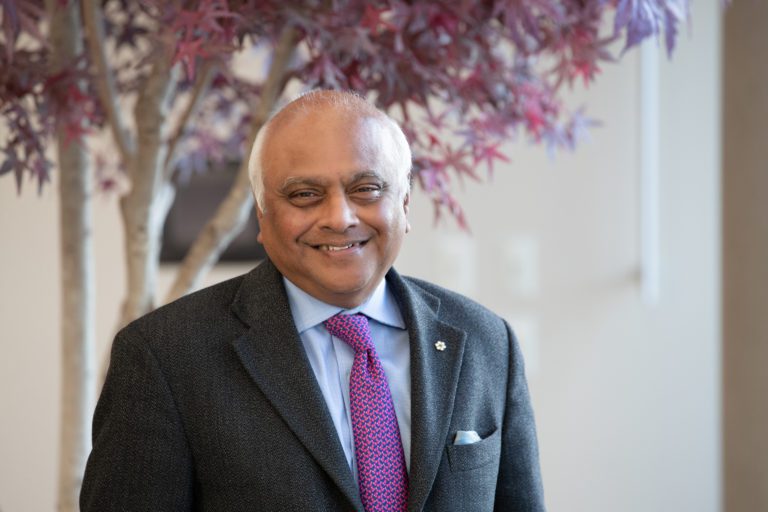
Devereaux; McGillion
Patients using take-home technology following non-elective surgery resulted in significantly greater detection and correction of drug errors, and reduction in patients’ pain, say the the PVC-RAM-1 study team led by PHRI Senior Scientist PJ Devereaux and Scientist Michael McGillion.
The research also raised the possibility of a reduction in acute-care as the result of virtual care and remote automated monitoring (RAM) technology.
The BMJ today published “Effect of post discharge after surgery virtual care with remote automated monitoring-1 technology versus standard care.”
Half of 905 post-surgery patients at eight hospital sites in Hamilton, Kingston, London, Ottawa and Edmonton in Canada were randomized to use technology at home – a cellular tablet and wearable devices to measure their heart rate, blood pressure, oxygen saturation, respiration rate, body temperature and weight – for 30 days after they left the hospital.
The other half of patients received standard care, which is to see a health care provider, usually in-person, within 30 days of hospital discharge – with the impetus on patients to reach out to their surgeon with any concerns about medications or symptoms during that time.
The study found that more patients in the virtual care group compared to the standard care group had a medication error detected (30% versus 6%, respectively) and corrected (28% versus 4%, respectively).
As well, compared to the standard care group, fewer of the virtual care patients – a difference of 10 to 14 per cent lower – reported they experienced pain, measured at different points during the month.
Virtual care has potential to reduce acute-care visits
Analyses suggested that virtual care and RAM reduced the frequency of hospital re-admission, emergency department or urgent-care centre visits when the patient received high escalation of virtual care, such as frequent involvement of a doctor by the nurse in the patient’s care, but not in cases with lower levels of escalation.
Although the study began in April 2020 as a response to the pandemic, as hospitals were filled to over-capacity, “The pandemic is just the tip of the iceberg, in terms of virtual care’s potential, and how healthcare can be transformed,” says Michael McGillion, the study’s co-principal investigator and first author of The BMJ publication.
PVC-RAM-1 foundational for broader programs
PVC-RAM-1 study results served as the foundation for a new program in Hamilton, Canada, called Surgical Transitions featuring a virtual command centre set up to coordinate post-surgical virtual care across two hospital systems in the city.
As well, PHRI has co-created the Improving Perioperative and Cancer Outcomes through Excellence and Application of Virtual Technologies (PROTECT) laboratory with the Juravinski Cancer Centre in Hamilton – part of a bigger initiative, Virtual Care and Remote Automated Monitoring Technology Research (VICTOR), a collaboration with Hamilton Health Sciences and the Escarpment Cancer Research Institute.
Read The BMJ publication of PVC-RAM-1 results.
EDITOR’S NOTE: November 23, 2021 interview by Colin Hung, Editor, Healthcare IT Today, with PJ Devereaux and Mike McGillion on PVC-RAM-1 results:




